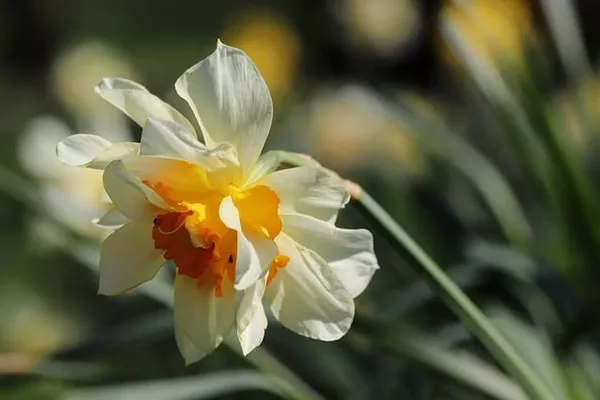Daffodils, with their vibrant hues and cheerful demeanor, mark the arrival of spring in many parts of the world. However, as with all good things, their flowering period eventually comes to an end. While it may be tempting to simply let them wither away, proper care after flowering is crucial for ensuring healthy bulbs and vibrant blooms next season. In this comprehensive guide, we’ll delve into the various steps you can take to care for daffodils once they’ve finished flowering, from deadheading to bulb maintenance and everything in between.
1. Deadheading:
Once the blooms have faded and wilted, it’s essential to remove them promptly through a process known as deadheading. This not only tidies up the appearance of the plant but also prevents it from expending energy on seed production, redirecting that energy back into the bulbs for next year’s growth. To deadhead daffodils, simply snip off the spent flowers just below the base using sharp, clean scissors or pruning shears. Be careful not to damage the foliage or emerging buds in the process.
2. Fertilization:
After flowering, daffodils require a boost of nutrients to replenish their energy stores and prepare for next year’s growth. Applying a balanced fertilizer high in phosphorus and potassium will support healthy bulb development and encourage robust flowering in the future. Opt for a slow-release fertilizer specifically formulated for bulbs, and apply it according to the manufacturer’s instructions. Avoid fertilizers high in nitrogen, as they can promote lush foliage growth at the expense of bulb development.
3. Watering:
While daffodils are relatively drought-tolerant once established, adequate moisture is still essential for bulb health and growth. After flowering, continue to water the plants regularly, especially during periods of prolonged dryness. Aim to keep the soil consistently moist but not waterlogged, as excessive moisture can lead to bulb rot. Mulching around the base of the plants can help retain soil moisture and suppress weeds, further supporting daffodil health.
4. Leave the Foliage Intact:
Although it may be tempting to remove the foliage once the flowers have faded, resist the urge to do so. The leaves of daffodils play a critical role in photosynthesis, allowing the plant to manufacture and store energy in the bulbs for the following year’s growth and flowering. Allow the foliage to yellow and wither naturally before removing it, typically six to eight weeks after flowering. In the meantime, continue to provide proper care and maintenance to support the plant’s post-flowering transition.
5. Division and Transplanting:
Over time, daffodil bulbs can become overcrowded, leading to reduced flowering and overall vigor. Dividing and transplanting bulbs every few years helps alleviate overcrowding, promotes better air circulation, and rejuvenates the planting bed. The best time to divide daffodil bulbs is in late summer to early autumn, once the foliage has died back completely. Carefully dig up the bulbs, separate them into individual offsets, and replant them in well-prepared soil enriched with organic matter. Space the bulbs at least three times their diameter apart to allow for future growth and expansion.
6. Pest and Disease Management:
While daffodils are relatively low-maintenance plants, they can still fall victim to pests and diseases if proper precautions are not taken. Keep an eye out for common pests such as aphids, slugs, and snails, which can damage foliage and bulbs if left unchecked. Regularly inspect the plants for signs of disease, such as fungal infections or viral symptoms, and take appropriate measures to mitigate the issue. This may include removing affected foliage, applying fungicides, or practicing crop rotation to prevent disease buildup in the soil.
7. Storage and Overwintering:
In regions with harsh winters, daffodil bulbs may benefit from additional protection to ensure their survival during the dormant period. Once the foliage has died back completely, carefully lift the bulbs from the ground and gently brush off any excess soil. Allow the bulbs to dry thoroughly in a cool, well-ventilated area for a few days before storing them in a breathable container such as a mesh bag or cardboard box. Store the bulbs in a cool, dark location with moderate humidity until it’s time to replant them in the autumn. Inspect the bulbs periodically for signs of decay or disease, discarding any that appear compromised.
Conclusion
While daffodils may only grace us with their presence for a brief period each spring, proper care and maintenance throughout the year ensure their continued health and vitality. By following the steps outlined in this comprehensive guide, you can help your daffodils thrive long after their flowers have faded, ensuring a spectacular display year after year. So, the next time your daffodils have finished flowering, don’t simply let them fade away—give them the care they deserve, and they’ll reward you with beauty for seasons to come.


